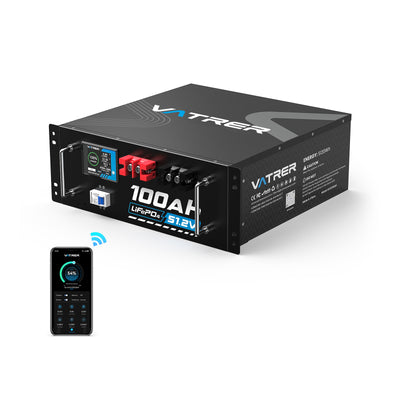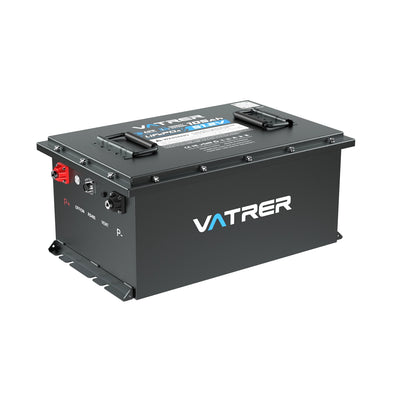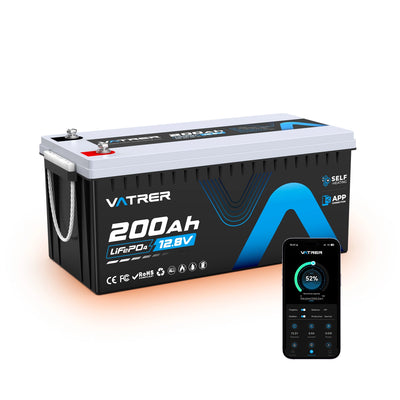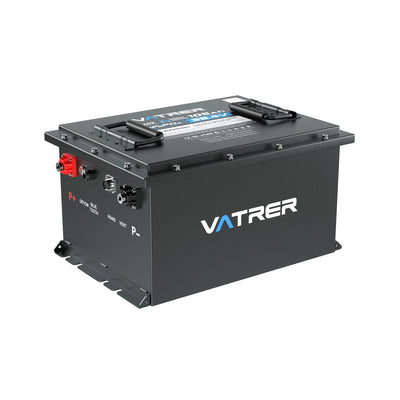
How Long Do Golf Cart Batteries Last On One Charge
Picture yourself rolling up to the 17th green on a clear afternoon, only for your golf cart to suddenly lose pace. Whether you’re a regular golfer, manage a resort fleet, or enjoy relaxed drives around a residential community, how far your golf cart can go on a single charge largely shapes your day.
Knowing how long golf cart batteries last per charge isn’t just a comfort issue – it also affects reliability, running costs, and smart long-term ownership. In this guide, we’ll look at typical real-world range, what influences it, and practical ways to maximise performance from your battery.

Typical Range Per Charge: Comparing Main Golf Cart Battery Types
The distance (or number of golf holes) you can cover on a full charge depends mainly on the battery technology you use. Below is a comparison of the two most common options:
| Battery Type | Range on One Charge | Run Time Estimate | Maintenance Needs | Average Lifespan |
|---|---|---|---|---|
| Lead-Acid Batteries | 15–25 miles | 2–3 hours | High – top up water, clean terminals | 4–6 years |
| Lithium Golf Cart Batteries | 30–40+ miles | 4–5+ hours | Low – virtually maintenance-free | 8–10+ years (or longer) |
Tip: A lithium pack such as the Vatrer 48V 105Ah can deliver up to around 50 miles of driving, ideal for longer outings or several rounds of golf in a day.
Key Factors That Affect How Far Your Golf Cart Battery Can Take You
Even with the best golf cart battery, your range on a single charge is not fixed. The following conditions and habits have a major impact:
Terrain
- Flat courses and paths use less energy, so you can expect longer journeys.
- Steep slopes, uneven ground, and frequent stopping and starting drain the battery more quickly.
Load and Accessories
- Carrying several passengers or heavy equipment increases power draw.
- Extras such as lights, fans, coolers, or audio systems all shorten available run time.
Driving Style
- Rapid acceleration and continuous high speed consume charge faster.
- Gentle starts and steady speeds help conserve energy.
Temperature
- Very hot or very cold weather can reduce both usable capacity and range.
- Batteries perform best at moderate, stable temperatures during use and charging.
Types of Golf Cart Batteries and How to Select the Right One
Here’s a quick overview of the most common golf cart battery types to help you choose according to how you use your cart:
- Flooded Lead-Acid (FLA): Lower purchase cost but labour-intensive. Requires regular checks and topping up with distilled water.
- Absorbed Glass Mat (AGM): Sealed lead-acid design with reduced routine care, but still comparatively heavy and with a shorter service life than lithium.
- Lithium-Ion (LiFePO4): Lightweight, long-lasting, needs minimal maintenance, and supports quicker charging, for example the Vatrer golf cart lithium battery.
Note: Although lithium batteries cost more at the outset, their extended lifespan and consistent performance usually provide better value over the full ownership period.
Common Signs Your Golf Cart Battery Is Losing Range
If your cart is running out of power sooner than it used to, the battery may be nearing the end of its useful life. Watch for:
- Reduced distance covered on a full charge.
- Charging taking noticeably longer than before.
- Lower top speed or slower take-off.
- Having to refill water more frequently (for lead-acid batteries).
- Swollen, misshaped, or distorted battery cases.
Tip: These symptoms are strong indicators that your golf cart battery should be tested and may need replacing.
Golf Cart Battery Care Tips to Maximise Range Per Charge
Whether you run lead-acid packs or lithium golf cart batteries, good maintenance routines help you get more out of every charge:
For All Battery Types
- Avoid deep discharge; recharge once you reach roughly 20–30% state of charge.
- Always use a charger that is designed for your specific battery chemistry.
- Store batteries in a cool, dry place – high temperatures accelerate wear and ageing.
For Lead-Acid
- Check electrolyte levels after charging and top up with distilled water only.
- Keep terminals free from corrosion to reduce resistance and power loss.
- Prevent overcharging – use a smart or automatic charger where possible.
For Lithium Battery
- Choose packs with an integrated BMS (such as Vatrer’s smart lithium batteries) to protect against overcharging and overheating.
- Avoid running the pack completely flat; starting a recharge when around 20% capacity remains helps support a longer lifespan.
How Long Does a Golf Cart Battery Need to Last to Be Considered “Long Enough”?
Here’s how different battery choices translate into everyday use:
| Use Case | Ideal Battery Type | Range Needed | Notes |
|---|---|---|---|
| Weekend golfer (18–36 holes) | Lithium or Lead-Acid | 10–25 miles | Lead-acid can work, but lithium delivers a smoother experience |
| Retirement community rider (daily use) | Lithium | 30–40+ miles | Lasts longer and is more dependable |
| Golf course/resort fleet | Lithium (low maintenance) | High mileage and strong uptime | Less downtime and extended battery service life |
| Hilly or off-road terrain users | High-capacity lithium | ≥40 miles | Lighter batteries improve efficiency and climbing ability |
When to Replace Your Golf Cart Battery and Avoid Range Anxiety
Even a well-cared-for battery will eventually wear out. Use these guidelines to plan ahead:
- Lead-acid batteries: Typically around 4–6 years or roughly 500–800 full charge cycles.
- Lithium batteries: Around 8–10 years or about 3000–5000 cycles, especially with a Vatrer LiFePO4 battery.
Pro Tip: Replace batteries as a complete set to keep the pack balanced. Mixing different ages or types in the same system can cut performance and may damage the batteries.
Make Every Charge Count with Vatrer Lithium Batteries
If you want dependable range and modern battery technology, Vatrer Battery supplies advanced lithium golf cart batteries such as the 48V 105Ah LiFePO4 battery, featuring a built-in 200A BMS and rapid 58.4V 20A charging.
- Provides up to roughly 50 miles per full charge.
- Integrated smart protection for safer and more efficient operation.
- Delivers 4000+ charge cycles in typical use.
- Maintenance-free and around 50% lighter than traditional lead-acid packs.
Whether you are refreshing an older cart or specifying a new build, Vatrer batteries help you travel further with fewer worries.
Smarter Batteries, Smoother Rides
So, how long do golf cart batteries last on a single charge? The real answer depends on chemistry, driving patterns, and how carefully you look after the system.
Selecting the right battery – especially a high-performance lithium pack – and maintaining it properly gives you more distance, fewer unplanned stops, and a more enjoyable drive. When you decide to upgrade, choosing a trusted brand like Vatrer Battery means you benefit from advanced technology that supports you over the long term.
Ready to extend your range? Explore Vatrer lithium solutions created for today’s golf cart owners. Reliable. Efficient. Smart.
FAQs
How Do I Size a Battery for My Particular Golf Cart Use?
Start sizing by looking at how you actually use the cart: estimate your typical daily distance or hours of operation, including hills, passengers, and powered accessories.
Translate that into an energy requirement using an estimated average power draw (W) or current (A) for your cart, then add a safety margin of around 20–40% and choose an appropriate usable Depth of Discharge (DoD) for the battery chemistry (for example, LiFePO4 usually allows a higher usable DoD).
From there, select a battery pack whose rated capacity and voltage comfortably exceed that usable energy, allowing for charging and discharge losses. For fleets, size against the busiest day rather than the average to minimise mid-shift charging interruptions.
What Is a Good Golf Cart Charging Strategy for Fleet Operations?
An effective approach is to stagger charging so the entire fleet is not off-duty at once: set defined charging periods (after use and during natural breaks), use smart chargers to top up only when needed, and keep a small reserve of carts ready for peak times.
Monitor battery state of health centrally (using BMS data where available) so you can prioritise replacements and rotate packs to share wear evenly. Aim for dedicated charging bays equal to at least 20–30% of the fleet on very busy days, and document charging procedures so staff apply consistent habits.
How Should I Store Golf Cart Batteries During Longer Off-Season Periods?
For extended storage, keep lithium packs at roughly 40–60% state of charge and lead-acid batteries fully charged, then disconnect them or use an appropriate maintenance or float charger.
Store batteries in a cool, dry space, ideally around 10–25°C (50–77°F), to limit self-discharge and ageing; avoid freezing conditions and very hot lofts or sheds.
Check charge levels every 6–8 weeks and top up as required to prevent deep discharge. Mark each stored pack with the date and approximate SOC to simplify bringing them back into service.
Can I Convert an Older Golf Cart from Lead-Acid to Lithium?
Yes, many older carts can be upgraded to lithium, but the process is more involved than swapping like-for-like batteries.
You need to match the system voltage, confirm the controller is compatible with the different voltage curve, fit a suitable charger and BMS, and mechanically secure the lighter lithium modules in the battery bay.
Also check earthing, fuses, and connectors. A qualified technician should verify motor and controller limits and apply any required software updates or limits so you avoid nuisance trips, safety issues, or warranty complications.
What Safety Measures Should I Follow When Transporting and Installing Batteries?
Always cover and insulate terminals, secure batteries firmly so they cannot move, and use non-conductive lifting straps or handles.
Wear appropriate eye and hand protection, keep a suitable dry powder fire extinguisher on hand when moving several lithium packs, and never stack batteries loosely.
For lithium units, follow the supplier’s preparation and packaging guidance and check with your carrier about any dangerous goods rules. When unsure, ask the supplier or a certified installer to deal with lifting and installation.
How Can I Troubleshoot a Golf Cart Battery That Charges but Loses Power Quickly?
Begin with basic checks: confirm the charger is delivering the correct voltage and current, ensure terminals are tight and free of corrosion, and look for unintended loads such as lights or accessories left on.
Next, measure open-circuit voltage and how far it drops under load. A large voltage drop with a modest load usually indicates increased internal resistance or failing cells. If the pack has a BMS with logs, review error codes and charge acceptance data.
When tests point to internal ageing or damage, plan for replacement; short-term fixes may restore performance briefly but rarely solve the underlying issue.
Share



















































